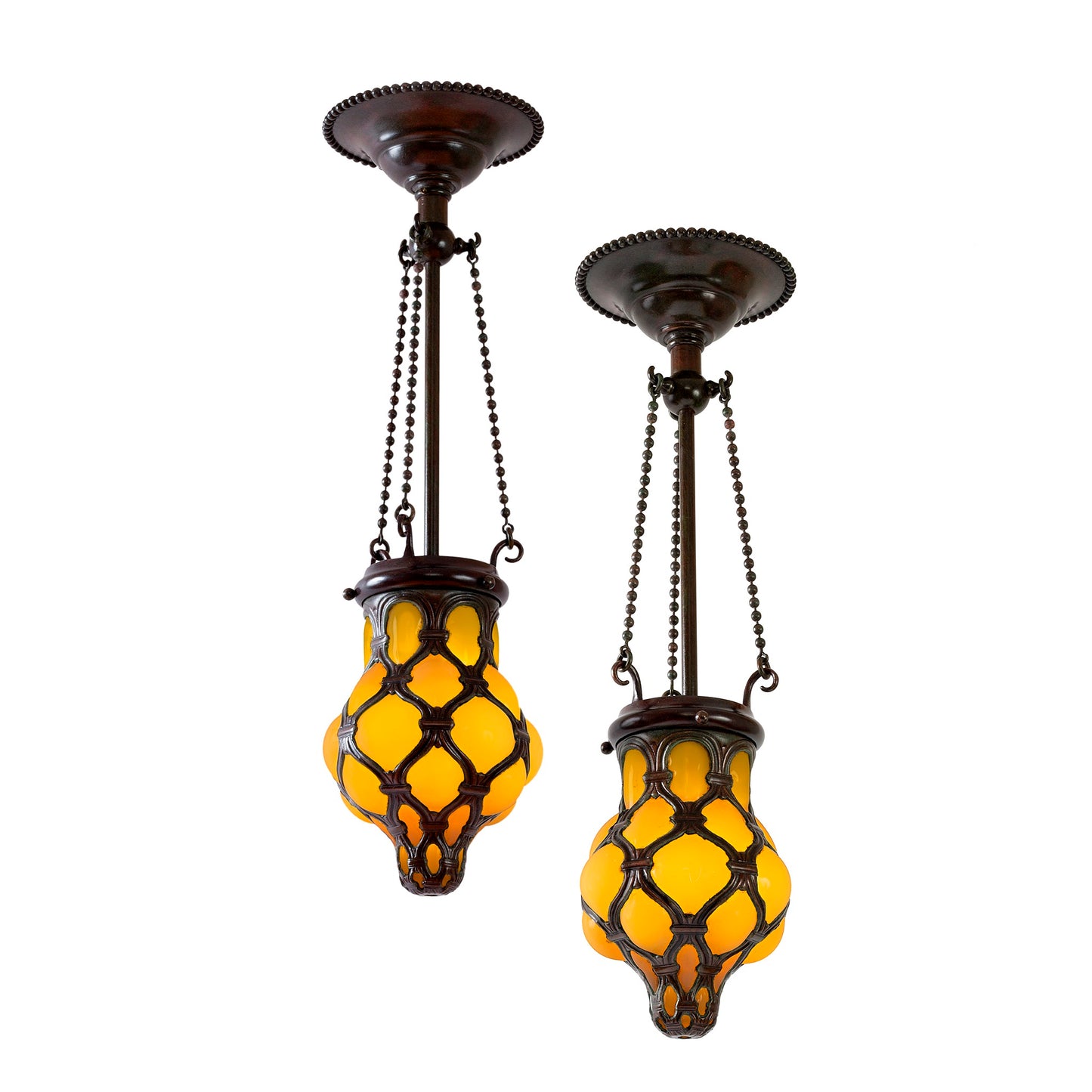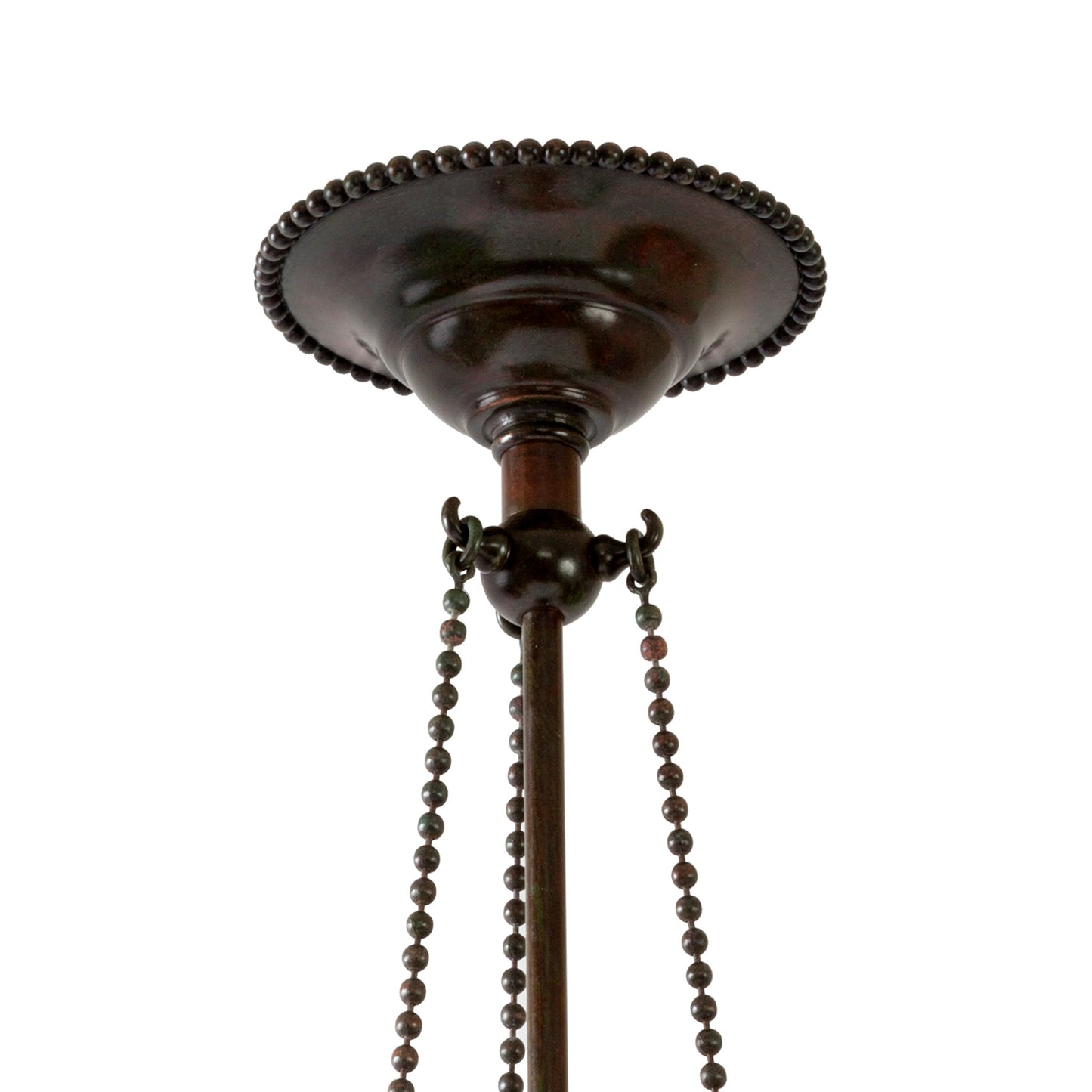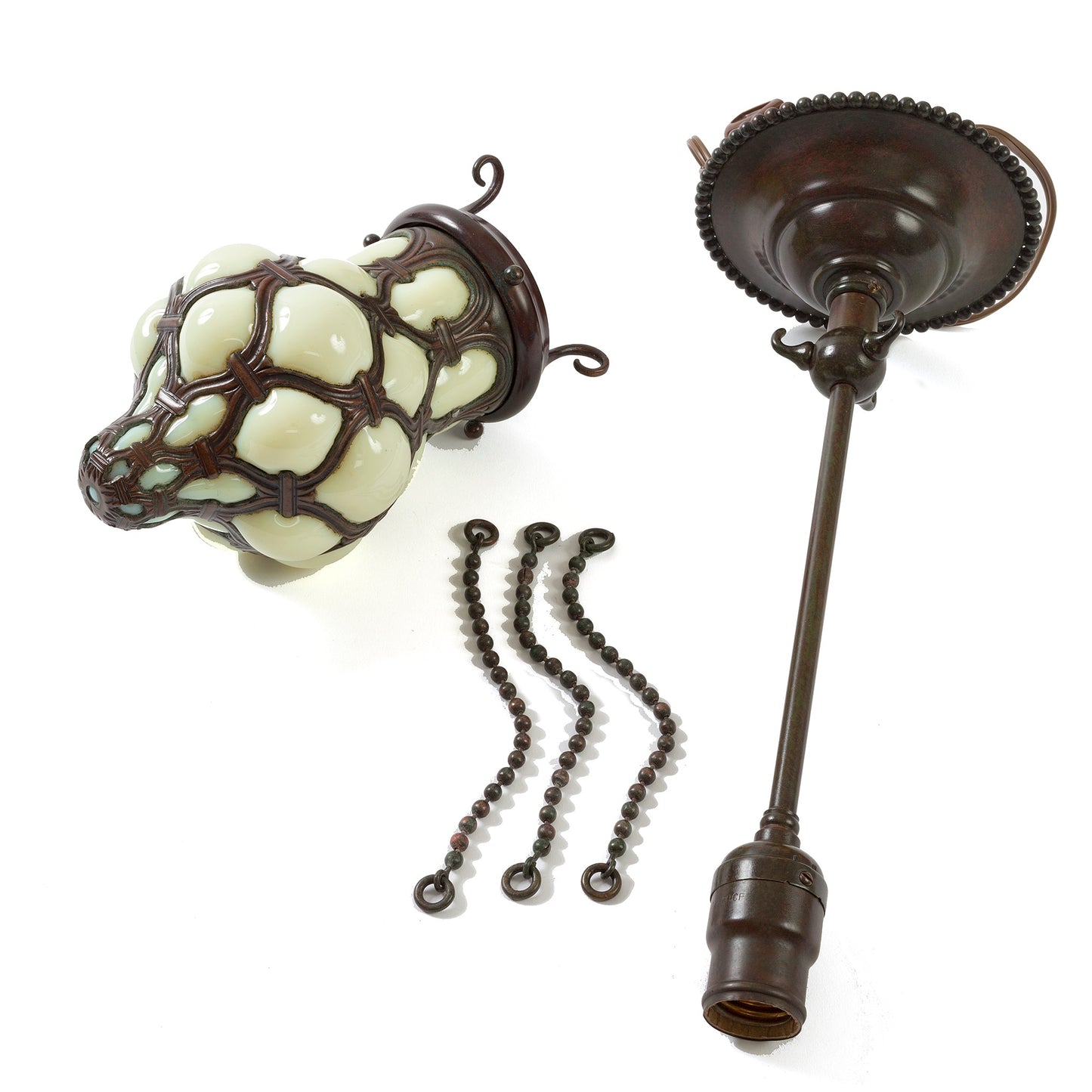Pair of Tiffany Studios New York "Globe" Glass and Bronze Chandeliers
This enchanting pair of Tiffany Studios New York "hanging globe" chandeliers are composed of two reticulated glass shades. Tiffany’s idea of blowing glass through openwork bronze had evolved in the 1890s with a series of Byzantine revival fuel lamps. The technique was popularized by 19th-century Muranese Glassmakers Salvati as a derivation of the Ancient Roman cage cup (vasa diatreta). In the 4th century, Roman glassmakers encased blown glass vessels in a delicate cage of glass. In Tiffany’s version, glass is blown through an ogival pattern cage. Originating in 11th-century Byzantine textiles, the ogival pattern became established in Italy, Ottoman Turkey, North Africa, and as far west as the Balkans. We brought this pair back to its former glory with custom-made Tiffany style hanging hardware.
Item #: L-20851
Artist: Tiffany Studios New York
Country: United States
Circa: 1900
Dimensions: 5" diameter; 7.5” shade length, 18" length with chain (height adjustable)
Materials: Favrile Glass, bronze
Literature: A similar example is pictured in Tiffany Lamps and Metalware by Alastair Duncan, pg 290, illustration number 135.
Item #: L-20851
Artist: Tiffany Studios New York
Country: United States
Circa: 1900
Dimensions: 5" diameter; 7.5” shade length, 18" length with chain (height adjustable)
Materials: Favrile Glass, bronze
Literature: A similar example is pictured in Tiffany Lamps and Metalware by Alastair Duncan, pg 290, illustration number 135.






















